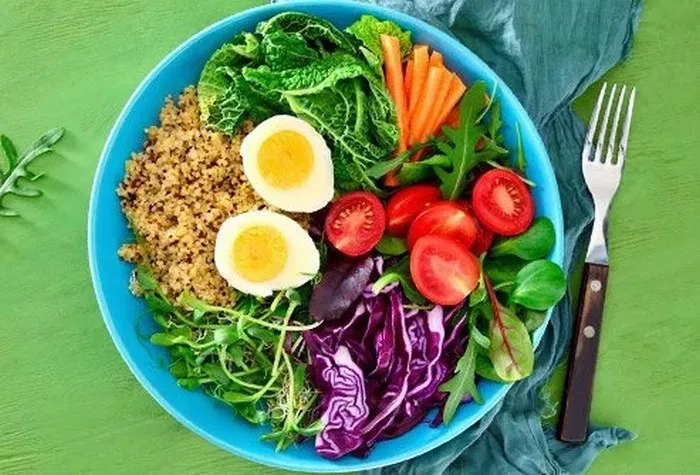Sugar – Maintaining optimal blood sugar levels is crucial for overall health, especially for individuals with diabetes or those aiming to prevent insulin resistance. Diet plays a pivotal role in sugar control, and avoiding certain foods is essential in managing blood sugar effectively. In this article, we will explore ten foods that you should avoid for sugar control. From sugary treats to refined carbohydrates, these dietary culprits can significantly impact blood sugar levels, making it imperative to be mindful of food choices for better glucose regulation.
10 Foods You Can’t Eat for Sugar Control
1. Sugary Beverages: A Liquid Sugar Menace
Sugar – Sugary beverages are a primary culprit when it comes to elevated blood sugar levels. Sodas, energy drinks, fruit juices, and sweetened teas are loaded with added sugars, contributing to rapid spikes in blood glucose. Consuming these sugary drinks can overwhelm the body’s ability to process sugar efficiently, leading to insulin resistance over time.
The high fructose content in many sweetened beverages is particularly concerning, as excessive fructose consumption has been linked to insulin resistance and fatty liver disease. Opting for water, herbal teas, or drinks sweetened with non-caloric sweeteners can be beneficial for those looking to manage their blood sugar levels effectively.
2. Candy and Confectionery: A Sweet Temptation to Avoid
Sugar – Indulging in candy and confectionery is a surefire way to disrupt blood sugar control. These sweet treats are typically high in refined sugars, offering little to no nutritional value. Consuming candies, chocolates, and other sugary snacks leads to rapid spikes in blood glucose, followed by energy crashes.
To satisfy a sweet tooth without compromising blood sugar, consider healthier alternatives such as fresh fruit, dark chocolate with higher cocoa content, or sugar-free desserts. Moderation is key, and being mindful of portion sizes can help prevent excessive sugar intake.
3. Pastries and Baked Goods: Refined Carbohydrate Havens
Sugar – Pastries and baked goods often contain refined carbohydrates and sugars, contributing to blood sugar imbalances. Items like cakes, cookies, and pastries undergo processing that strips away fiber and nutrients, leaving behind easily digestible sugars. This quick absorption can lead to sharp increases in blood glucose levels.
Opt for whole grain alternatives or recipes that incorporate healthier flours, such as almond or coconut flour. Additionally, consider reducing sugar content by using natural sweeteners like stevia or incorporating fruits for added sweetness. Making these adjustments can help mitigate the impact on blood sugar.
4. Flavored Yogurts: Surprising Sugar Bombs
Sugar – Flavored yogurts, often perceived as healthy, can be deceptive in terms of sugar content. Many commercially available flavored yogurts are loaded with added sugars and artificial sweeteners. Consuming these sugary yogurts can lead to rapid increases in blood sugar, especially when eaten as part of a meal.
Opt for plain, unsweetened yogurt and add your own fresh fruits or a small amount of honey for natural sweetness. Greek yogurt is an excellent choice as it is higher in protein and lower in sugar compared to regular yogurts. Reading food labels to identify hidden sugars is essential for making informed choices.
5. White Bread and Processed Grains: Blood Sugar Spikers
Sugar – White bread and processed grains are quickly converted into sugar by the body, leading to rapid spikes in blood glucose levels. These refined carbohydrates lack the fiber found in whole grains, which helps slow down the absorption of sugar. As a result, consuming white bread and similar processed grains can contribute to insulin resistance over time.
Opt for whole grain options such as whole wheat bread, brown rice, quinoa, or oats. These choices provide more fiber and nutrients, promoting better blood sugar control and overall health. Gradually transitioning to whole grains can be a positive step for those looking to manage their sugar intake.
6. Commercial Salad Dressings: Sweet Surprises
Sugar – Salad dressings purchased from the store may contain hidden sugars that can compromise your efforts for sugar control. Many commercially prepared dressings add sugar for flavor enhancement. Even seemingly healthy options can harbor added sugars, negating the nutritional benefits of a salad.
Consider making your own salad dressings using olive oil, vinegar, herbs, and spices. This allows you to control the ingredients and eliminate unnecessary sugars. Being mindful of ingredient labels when choosing store-bought dressings is crucial for maintaining optimal blood sugar levels.
7. Breakfast Cereals: Morning Sugar Pitfalls
Sugar – Many breakfast cereals, even those marketed as “healthy” or “whole grain,” can be packed with added sugars. Starting the day with a high-sugar cereal can lead to a rapid increase in blood glucose levels. Additionally, these cereals may lack the fiber needed for sustained energy.
Opt for whole grain, low-sugar cereals, or those with no added sugars. Consider adding fresh fruit or nuts for additional flavor and nutritional value. Reading nutritional labels and choosing cereals with higher fiber content can contribute to better blood sugar management.
8. Packaged Snack Bars: Convenience Comes at a Cost
Sugar – Packaged snack bars, often marketed as convenient and healthy options, can be loaded with added sugars. While they may seem like a quick and easy snack, the sugar content in many of these bars can lead to blood sugar spikes. Additionally, some may lack the necessary protein and fiber to promote satiety and stable blood glucose levels.
Opt for homemade snack bars using whole ingredients like nuts, seeds, and dried fruits. Alternatively, choose snack bars with minimal added sugars and higher fiber and protein content. Being vigilant about ingredient lists can help you make informed choices for better sugar control.
9. Processed and Canned Soups: Sugar in Savory Disguise
Sugar – Processed and canned soups can be surprising sources of added sugars. While sweetness may not be the predominant flavor, some manufacturers add sugar to enhance taste. Consuming these soups regularly can contribute to hidden sugar intake, impacting blood sugar levels.
Opt for homemade soups using fresh ingredients, allowing you to control the sugar content. If choosing store-bought options, carefully read labels to identify added sugars. Opting for low-sodium varieties with minimal additives can further support overall health.
10. Dried Fruits: Natural but Concentrated Sugars
Sugar – While dried fruits are a natural source of sugar, they are concentrated and can lead to rapid increases in blood glucose levels. The drying process removes water content, leaving behind a higher concentration of sugars. Consuming large quantities of dried fruits can contribute to elevated sugar intake.
Moderation is key when incorporating dried fruits into your diet. Consider pairing them with protein or healthy fats to slow down the absorption of sugar. Additionally, opting for fresh fruits provides similar flavors with the added benefit of hydration and fiber.
Conclusion
Sugar – Managing blood sugar levels requires a conscientious approach to dietary choices, and avoiding certain foods is essential for effective sugar control. From sugary beverages and candies to processed grains and flavored yogurts, these ten foods can significantly impact blood glucose levels. Opting for whole, nutrient-dense foods, reading labels, and being mindful of hidden sugars are crucial steps in maintaining optimal blood sugar levels. By making informed choices and incorporating healthier alternatives, individuals can take proactive steps toward better sugar control and overall well-being.























